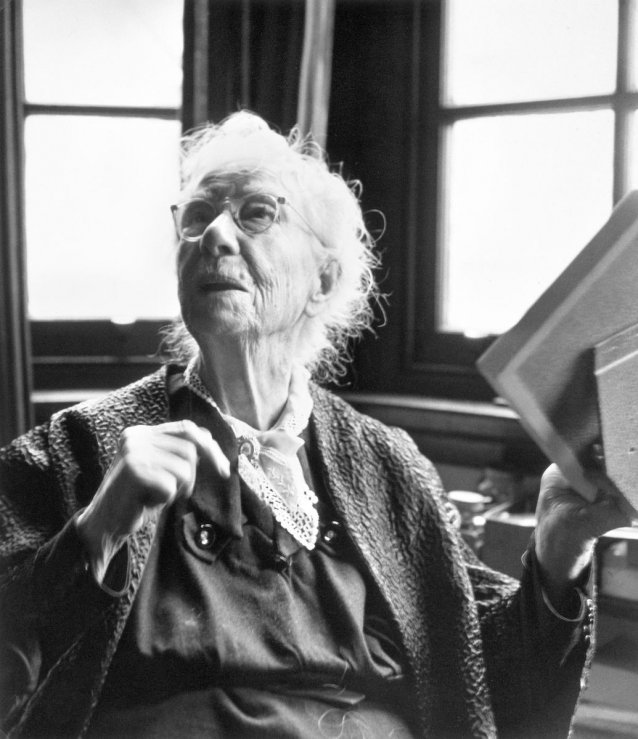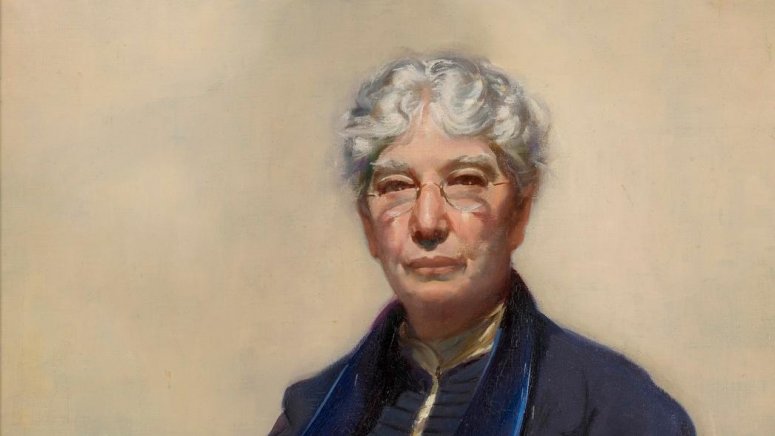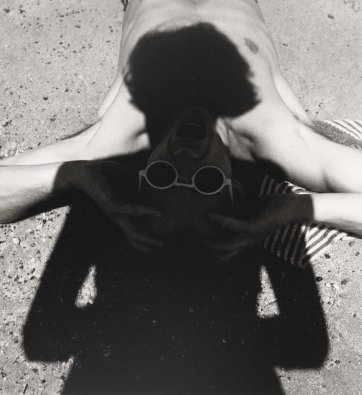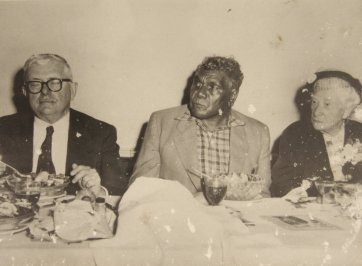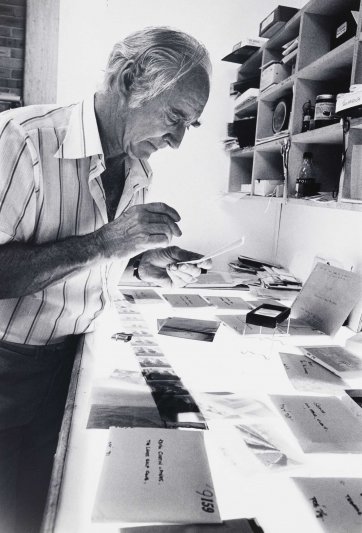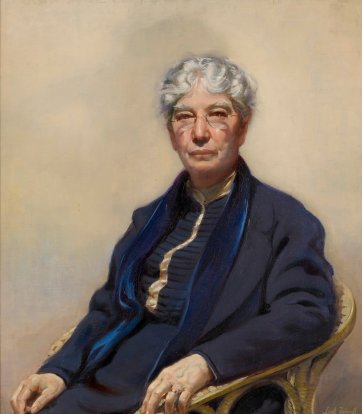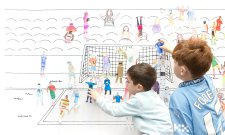For the last three decades of her life, Dame Mary Gilmore DBE (1865–1962) occupied a flat in Darlinghurst Road, Kings Cross, and was 'often to be met where writers, painters and anyone following the arts are congregated'. The distinguished poet, journalist, humanitarian and social reformer also occupied an elevated position in Sydney's cultural and intellectual life, making her someone of much interest to portraitists. Between 1928 and 1961 she sat for eleven Archibald Prize entries to artists including Adelaide Perry (1928), Joshua Smith (1943 and 1948), Louis Kahan (1960) and William Dobell (1957).
A leading Australian photographer of his era, Max Dupain established his reputation in the 1930s with portraits for magazines such the Home and his strikingly composed and dramatically lit images of musicians, dancers and fellow artists. After the war, Dupain's portrait style became more spontaneous, as demonstrated in this photograph of the 96-year-old woman-of-letters, captured as if in mid-sentence.
Purchased with funds provided by Timothy Fairfax AC 2003
© Max Dupain/Copyright Agency, 2024
The National Portrait Gallery respects the artistic and intellectual property rights of others. Works of art from the collection are reproduced as per the
Australian Copyright Act 1968 (Cth). The use of images of works from the collection may be restricted under the Act. Requests for a reproduction of a work of art can be made through a
Reproduction request. For further information please contact
NPG Copyright.
